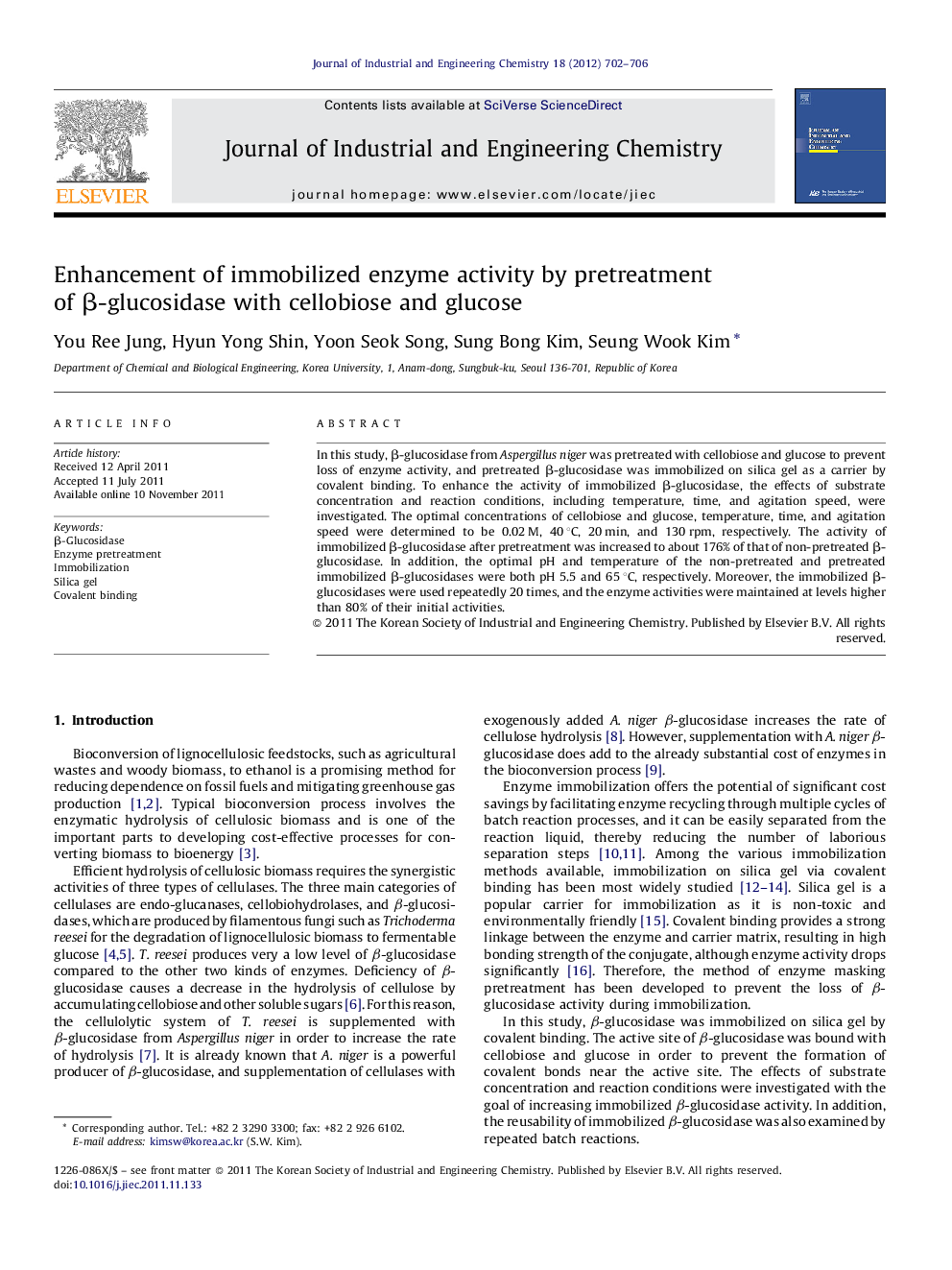| Article ID | Journal | Published Year | Pages | File Type |
|---|---|---|---|---|
| 229109 | Journal of Industrial and Engineering Chemistry | 2012 | 5 Pages |
In this study, β-glucosidase from Aspergillus niger was pretreated with cellobiose and glucose to prevent loss of enzyme activity, and pretreated β-glucosidase was immobilized on silica gel as a carrier by covalent binding. To enhance the activity of immobilized β-glucosidase, the effects of substrate concentration and reaction conditions, including temperature, time, and agitation speed, were investigated. The optimal concentrations of cellobiose and glucose, temperature, time, and agitation speed were determined to be 0.02 M, 40 °C, 20 min, and 130 rpm, respectively. The activity of immobilized β-glucosidase after pretreatment was increased to about 176% of that of non-pretreated β-glucosidase. In addition, the optimal pH and temperature of the non-pretreated and pretreated immobilized β-glucosidases were both pH 5.5 and 65 °C, respectively. Moreover, the immobilized β-glucosidases were used repeatedly 20 times, and the enzyme activities were maintained at levels higher than 80% of their initial activities.
